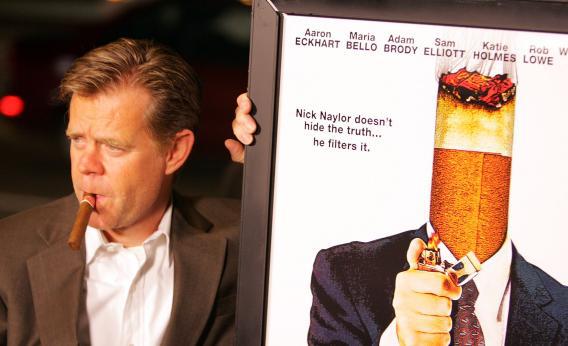Rating movies is a fraught process. Do depictions of gay sex trigger tougher ratings than straight sex? What expletives, if any, do children actually need to be protected from? And does genre make a difference? (In the documentary Bully, it’s real children using the “bad” words.) Now, an old debate about whether cigarette smoking onscreen should trigger an automatic R rating has resurfaced, thanks to a new study in Pediatrics, which found a link between teenage smoking and teen consumption of movies where characters smoke. The solution? “An R rating for movie smoking could substantially reduce adolescent smoking by eliminating smoking from PG-13 movies.”
We’ve been agonizing over this one for a long time. Five years ago, the Motion Picture Association of America, which oversees the Classification and Rating Administration, announced that it would start weighing depictions of smoking regardless of character age—previously, the MPAA had considered only images of teenagers and children smoking cigarettes that they couldn’t have obtained legally as applicable to determining ratings. Pediatrics researchers don’t say whether or not they believe that CARA is doing a good job in its assessments, but clearly ratings boards aren’t unconcerned about smoking. An industry that “looks to reach the largest audience possible,” as James Sargent, the co-director of the Cancer Control Research Program at the Norris Cotton Cancer Center, and director of the study, put it, is going to be keenly interested in staying responsive to community standards.
And community standards may be taking care of some of the problems Sargent identified. In announcing its policy shift in 2007, the MPAA also pointed out that depictions of smoking, either by major characters or fleetingly in a shot, were declining quickly anyway in response to societal norms, rather than an industry crackdown. In 2004, 60 percent of rated movies had fleeting or substantive images of smoking. By 2006, that number was down to 52 percent. And of those 2006 movies, the MPAA explained, 75 percent of them triggered R ratings for reasons other than smoking anyway. Both social norms and existing ratings standards are working together to minimize the problem the Pediatrics researchers have identified.
So should the MPAA start slapping R ratings on any movie that shows someone taking a drag? I don’t think so. Given that the board is monitoring incidences of tobacco use in movies, it could simply release those statistics along with its official ratings for each movie. Yes, this is one more layer of bureaucracy, but it would provide parents with the ability to make active, informed decisions themselves, rather than relying on a blunt tool that absolves them of responsibility while imposing a clumsy restriction on filmmakers.
An R rating traditionally throws up a much higher barrier to economic success, and while established franchises like Sex and the City can vault over it, the rating can be deadly for smaller films. It’d be a shame to impose that rating on movies that use cigarettes to signal villainy, or as part of a plot about smoking, addiction, or tobacco companies. Releasing information that the MPAA already has at its fingertips would let the board fulfill its mission to provide ratings that “reflect the current values of the majority of American parents.” And isn’t that enough?
